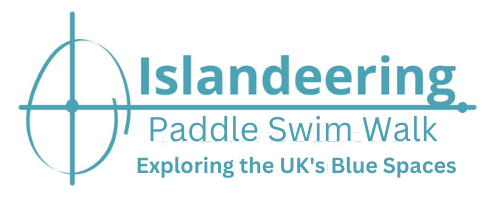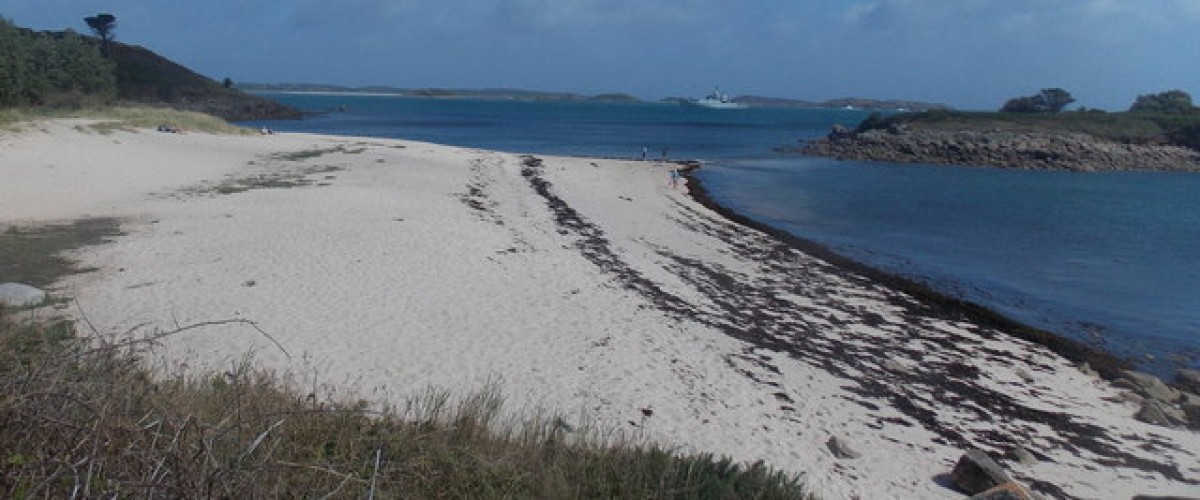There are four small islands off the coast of St Mary’s that can be accessed at low tide. Toll’s Island is the largest at 300 metres long and 175 metres wide. It sits in the north east of the island, 100 metres off Pelistry Bay to which it is linked by a sand tombolo. A number of overgrown paths weave through the island’s interior of grass, heather, gorse and brambles. In the west, wind-stunted trees sit within a walled area. For the eagle-eyed there are four small stone-lined kelp pits, marked on the Ordnance Survey map, just back from the shoreline on the south side of the island. They were used to burn seaweed to make soda ash used for glass, soap and alum production. The remains of an English Civil War gun battery, Pellew’s Redoubt, can also be seen on the sixteen metre high point of the island.
Innisidgen is a small tidal island that sits 100 metres off the north east coast of St Mary’s. This grass-topped island can be reached by an easy scramble from the mainland, just below the Bronze Age remains of Innisidgen. Of no particular note, it is still a must for island baggers. Just north of Hugh Town, Taylor’s Island is a small rocky tidal island joined to north end of Porthloo Beach at low tide, with a high point of 14 metres. At the south end of the same beach, Newford island, only cut off for an hour or so around high tide, has a dilapidated market garden in its centre. The island is a scheduled ancient monument by virtue of its defensive wall and gun battery dating to the English Civil War on the western half of the island. Finally, Rat Island was joined to St Mary’s by the harbour wall in Hugh Town, a building project undertaken as part of the quay extension in 1843. The island is now home to the Isles of Scilly Steamship Group’s ticket office and facilities, a good restaurant and inter-island boats depart from here.


